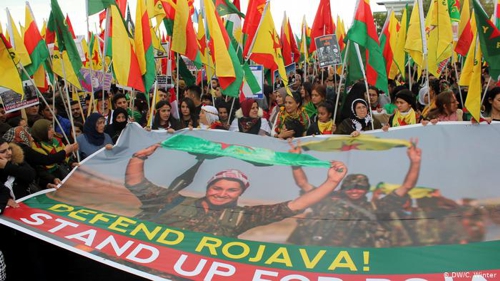Since the drawback of American troops from the northeast of Syria and the start of the Turkish Operation Peace Spring, there has been hue and cry in Western media about the plight of the Kurds in what they had hoped to be their independent state, Rojava. We hear that they have been betrayed, that the move is ill considered, that they will be massacred, that Daesh prisoners will be released and Daesh reconstituted, that there will be another massive immigration crisis in Europe, and so on. Just how much of this is true, and why are we hearing these things? And just who are these Kurds, anyway? These are questions worth answering. In this last of the three articles on the Turkish invasion of Syria, we look at Rojava itself.
Beginning with what constitutes Rojava, it is a self-proclaimed federation of three Kurdish cantons in the north of Syria, on Turkey’s border. It is also known as ‘The Autonomous Administration of North and East Syria’. Rojava was ‘born’ in earnest with the announcement of the federation of those three cantons in the northeastern Syrian region. This took place on 17 Mar 2016. The chart (no time given) is below (bigger):
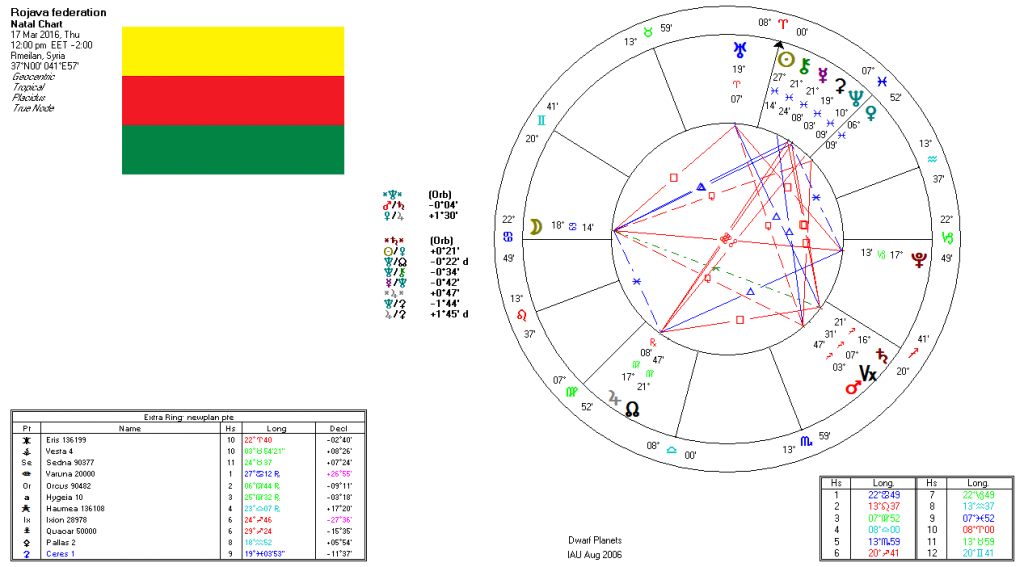
Before we get to the chart, it will be helpful to get some background on just who we are talking about when the Kurds are mentioned. We hear in the media that it is the Kurds who have been betrayed, but that is only partly true. There has been betrayal all around if we want to get to the truth of the war in Syria. But as to the Kurds, a map will help to clarify matters (below, bigger)
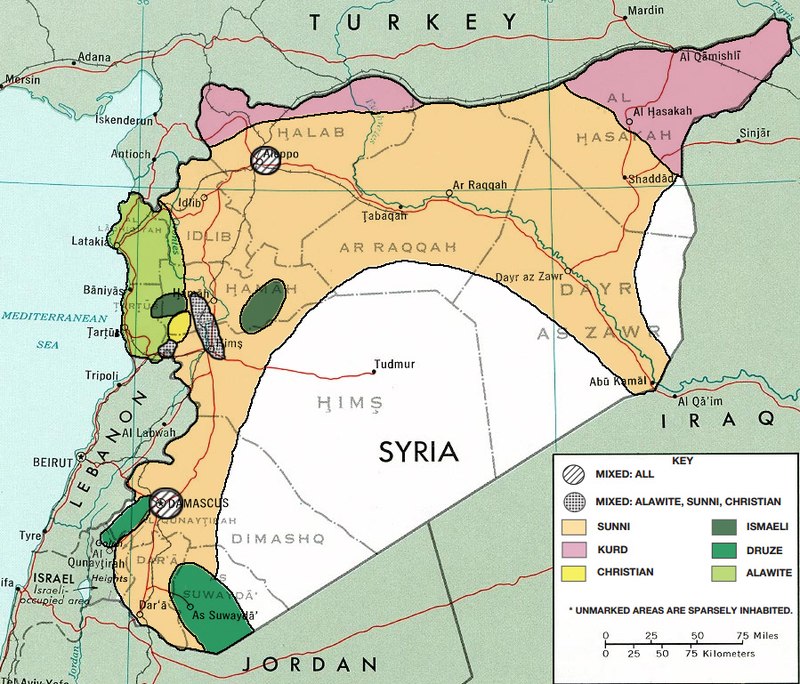
We see right away that the Kurdish minority (7% of Syria’s population) occupies the far northeast of the country, from al-Hasakah eastward, and a narrow strip across the north of Syria. Rojava is comprised of all the land east of the Euphrates, and the largest ethnic group there is Sunni Muslim. We also note that Syria is multi-ethnic. Prior to the war the various groups had lived in relative peace. But it is assumed that ‘Rojava’ is primarily Kurdish. It isn’t. The largest Kurdish populations are in Turkey (below, bigger)
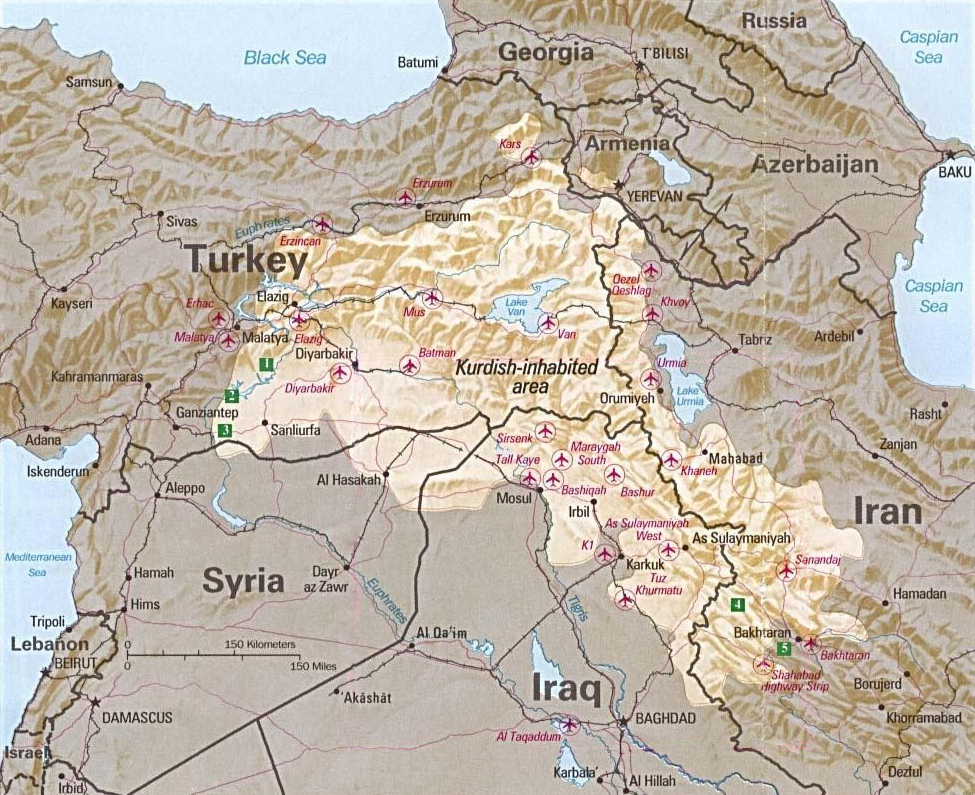
Further, there are differences between all the Kurdish groups in the various nations shown. The Syrian Kurds are the smallest group – 2.5 million at most out of upwards of almost 40 million in the greater Kurdistan region. And though they have been lionized in the English-speaking world, they have been neither the angels nor the victims the way they have been portrayed. But, they have fought onside the US against Daesh, which makes them the ‘good guys’ to the mainstream press. Hence the outrage about their abandonment we hear in the media. That takes us to the chart of Rojava.
Since we do not have a ‘birth time’ for Rojava, we cannot comment on the angles or the lunar degree. However, since the Sun-sign is Pisces, Neptune becomes important for the leadership of the region. Neptune is also suggestive of the dream that was to be Rojava.
Neptune is conjunct Venus in the chart, and for the West, one of the striking features of the federation has been the focus on its women, to the point of almost mythical proportions. Women are an integral part of the fighting forces (YPJ/SDF) of the Kurds. And the society as a whole is feminist. The mythos, also decried as sexist, is reinforced by a wide opposition between Jupiter and Neptune. The Moon is in Cancer, too, no matter what time of day the federation was announced, which further reinforces the feminine emphasis in the chart.
All this together points to a high idealism, which is ensconced in their constitution. It is quite a document if you read through it. From the Wikipedia article there is a brief synopsis:
The supporters of the region argue that it is an officially secular polity with direct democratic ambitions based on a libertarian socialist ideology promoting decentralization, gender equality, environmental sustainability and pluralistic tolerance for religious, cultural and political diversity, and that these values are mirrored in its constitution, society, and politics, claiming it to be a model for a federalized Syria as a whole, rather than outright independence.
But all is not light and high ideals with Rojava, much as the Western liberal press would have us believe. The midpoints to Neptune – Ven/Jup and Mars/Sat – point to a different picture, underlying the high ideals. The midpoints suggest disharmonious relations and a lack of correct behavior (Ven/Jup) along with weakening of powers, insufficient powers to tackle all obstacles (they needed the US support to survive) and at some point, a grievous and grave loss, which is what we are seeing today.
Then, to top that off, there is a Uranus/Pluto square in the chart, with Pluto being the esoteric ruler of Pisces, which on the one hand speaks to the efforts of reform and a revolutionary outlook for the future of Syria, and on the other side, the stubbornness of their attitude with respect to Damascus, as well as, “…Acts of violence, upsets, subversive activities, putting the gun to someone’s head, the enforcement of decisions, an accident.”
What do we see with Rojava and the start of Peace Spring, then? The chart with transits is below:
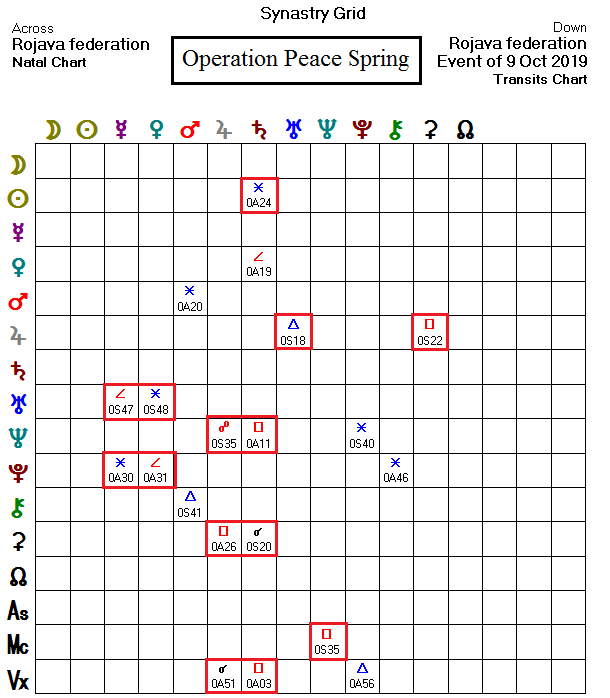
The other factor we can see in the chart, without a time of federation, is the Jupiter/Saturn square, which introduces a push-pull dynamic. It tends to kill the imagination, and when we look at the midpoints (in the federation chart) we see plenty of Neptune. That square was particularly activated by a Neptune transit at the start of the Turkish invasion, introducing a sharp wake-up. From Ebertin:
“Pessimism, a feeling of abandonment, the tendency to begrudge other people’s good fortune. – An intolerable loneliness, hard work without success, losses. – Damage to a building through dampness, water, gas or force majeure (war).”
Added to this is a transit of Ceres to the same square, indicating a turning point as well as the danger to women, especially since it was conjunct Saturn at the time.
The sudden reversal of direction with regard to Damascus is shown by the mutual Uranus and Pluto transits to Mercury and Venus in the chart – a new revolution, of sorts. The Sun was sextile to the Rojava Saturn, showing a fortunate turn or a wise decision. And then Jupiter was trine the Rojava Uranus – a sudden change in destiny and a lucky chance. A Turkish attack night not seem like a lucky chance, but turning to the Russians and Damascus was certainly better than being massacred by the Turks and their jihadist mercenaries.
Then, the Vertex of the operation chart was the reverse of Ceres, being conjunct Jupiter and square Saturn, showing that the region was to experience a new way of seeing things as well as a more realistic view. That last statement may seem a bit cold or ill-thought, but there are reasons for it.
When Rojava was formed as a federation, it was denounced throughout the world, save for a few places. The Kurds were not necessarily thinking through their decision carefully when it came to announcing their federation, given the facts on the ground. Dreams would appear to have outweighed realities in their case, and it has come back to shake them up.
Up until the Turkish invasion they had relied on US support and denied all advances from Damascus for reconciliation. They set themselves up in refusing to do so. But then, nothing ventured, nothing gained. We should keep in mind that at that point in the war it was still uncertain as to who would win out. The Russians had only been bombing Daesh for a few months then and Syria was still largely controlled by Daesh. However, given the support the Kurds now have in the US, there is a little matter that is a rather inconvenient truth. Just to be clear, the US denounced the formation of Rojava in 2016:
“We don’t support self-ruled, semi-autonomous zones inside Syria. We just don’t,” said State Department spokesman John Kirby.
“What we want to see is a unified, whole Syria that has in place a government that is not led by Bashar al-Assad, that is responsive to the Syrian people. Whole, unified, nonsectarian Syria, that’s the goal.”
In essence, Washington was quite happy for the Kurds to fight for them in 2016, but a separate, autonomous region was not in Washington’s plans. It complicated matters and increased tensions with Turkey, who also condemned the move. Obama had been sending arms to the Kurds since 2014, notably to the PKK faction – the one the Turks see as terrorists. And then, when Washington started arming them further, after Trump took office, relations with Turkey went from bad to worse. Prior to that, four months after Rojava was self-federated there was also the attempted coup in Turkey which Erdogan, not without reason, blamed on the US. So, there have been missteps between Washington and Turkey all along across both the Trump and Obama administrations.
Of particular interest in these articles on the Peace Spring offensive is the Sun-sign for Rojava, which is Pisces. Operation Peace Spring has Pisces rising (the target group). The Turks had been planning their invasion for some time, probably more pointedly after the announcement of federation, which would have given the Kurds their autonomous region and, it was feared, would incite Kurdish groups within Turkey to seek independence as well. We can probably surmise that Rojava has been the main rationale behind the Turkish invasion all along.
With all the condemnation we hear of Trump’s withdrawal of the troops from the border of Turkey, what is the real motive behind the heated rhetoric? Is it because the Beltway pundits actually care about the Kurds? And why are the Israelis upset about it? Retired Senator Ron Paul perhaps summed the matter up best:
“It was a colossally dumb idea to train and arm the Kurds in Syria in the first place, but after spending billions backing what turned out to be al-Qaeda affiliates in Syria to overthrow the Assad government, Washington found that the Kurds were the only willing boots remaining on the ground. While their interest in fighting ISIS was limited, they were happy to use Washington’s muscle in pursuit of their long-term goal of carving out a part of Syria (and eventually Turkey) for themselves.
We can never leave because there will be a slaughter, Washington claimed (and the media faithfully repeated). But once again, the politicians, the mainstream media, and the Beltway “experts” have been proven wrong. They never understand that sending US troops into another country without the proper authority is not a stabilizing factor, but a de-stabilizing factor. I have argued that were the US to leave Syria (and the rest of the Middle East) the countries of the region would find a way to solve their own problems.
Now that the US is pulling back from northern Syria, that is just what is happening.”
And if we really want to get to the basis of the troubled story of the Kurds, we have to go back to the fall of the Ottoman Empire, when the British and the French carved up the region into its present states in an effort to keep the Ottomans from reconstituting, as well as to secure the energy reserves in the region. The Sykes-Picot Agreement was the start. And then the Americans drove in the final nail with the Treaty of Lausanne in 1923, when the US sided with the Turks, giving Kurdistan back to the Turks. The Turks promptly massacred tens of thousands of Kurds.
So, while the liberal press and pundits in the US cry crocodile tears over the Kurds, the Syrians, which includes now the Syrian Kurds, move quickly to reclaim and shore up the territory they almost lost to a group (Daesh) that the US, the Turks, the Saudis, the UAE, the Israelis and a few European powers actually funded and supported, seeking to overthrow Assad. And Turkey is using thousands of those same terrorists in Peace Spring – otherwise known as the Syrian National Army – to make a grab for the northern part of Syria. Those troops, who have a real hatred of the Kurds, are committing war crimes as they advance. They are also releasing Daesh prisoners.
When the war is finally over and when all the parties finally sit across the table to discuss the political solution to Syria’s problems, and probably a new constitution, the ideas in the Rojava constitution will be on the table, too, as the Kurds will be represented. That was a precondition of the Kurds agreeing to SAA integration. Syria was the only secular nation in the region, all the others being Islamic in some form or another. Rojava was formed as a secular polity as well.
In the new Syria, born out of its terrible war, with lessons learned, maybe, just maybe, the Kurds will become a respected part of Syrian society rather than a suppressed minority. Time will tell. Like many, I am not holding my breath, but when the spirit moves a nation, miracles do happen. The war was supposed to be over in months back in 2011. Assad is still there, and so, too, is Syria. So, too, will be the Kurds.
For more information on the Kurds, you can start here, here, here and here.
Featured pic from DW

